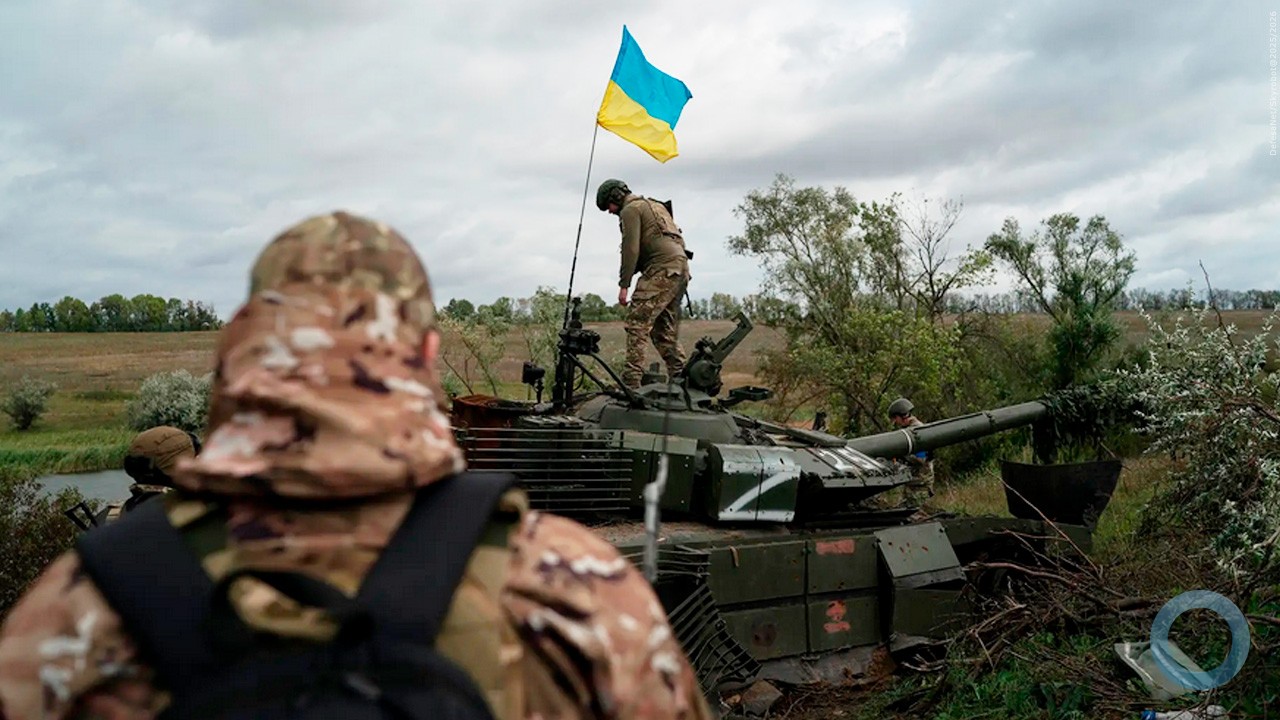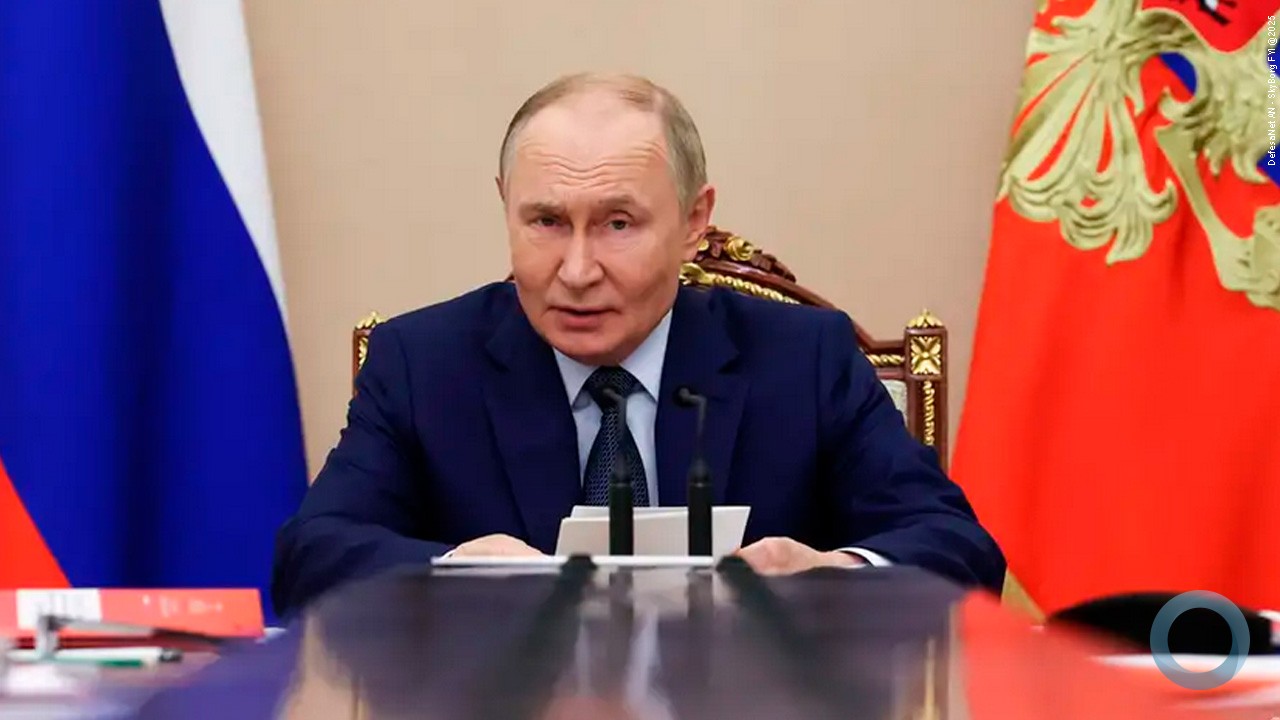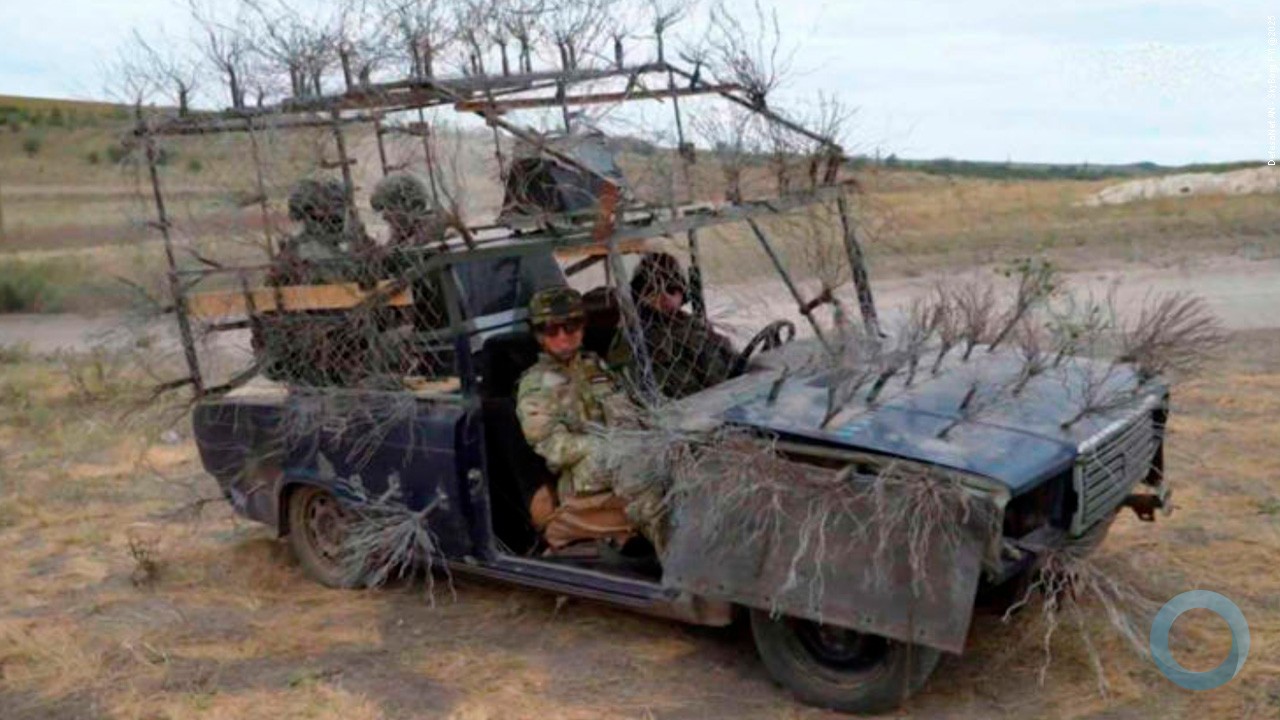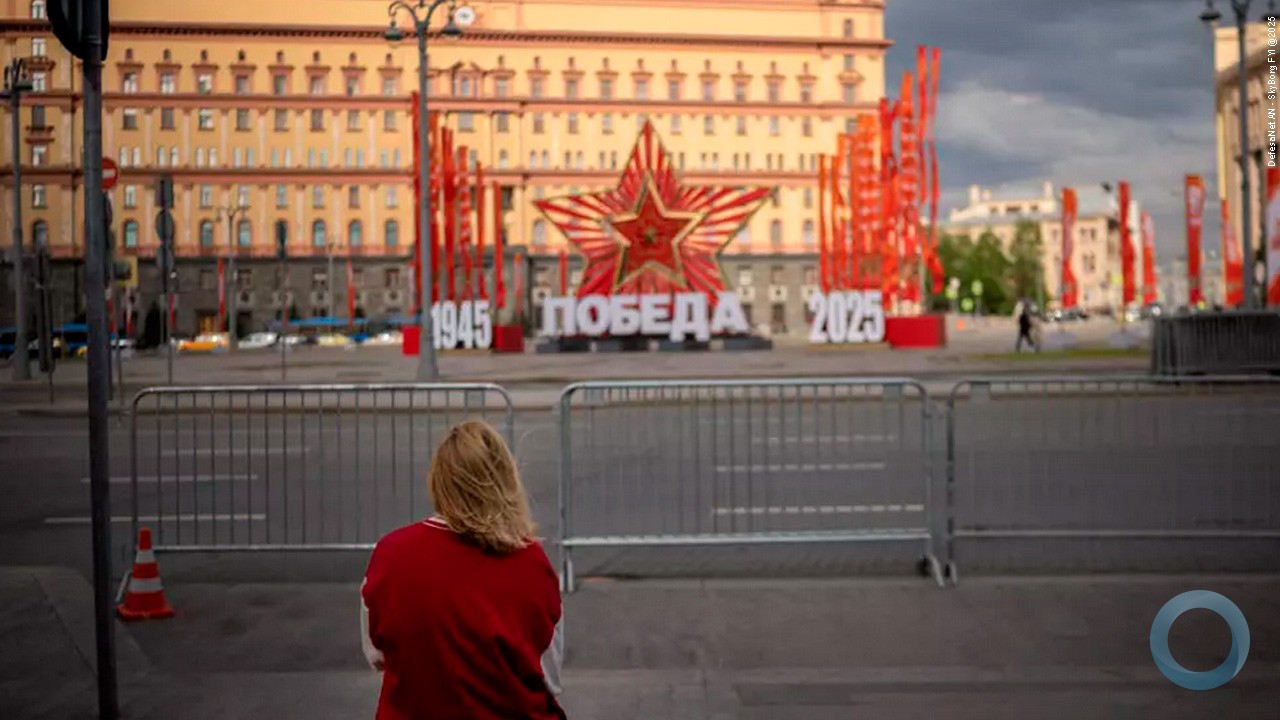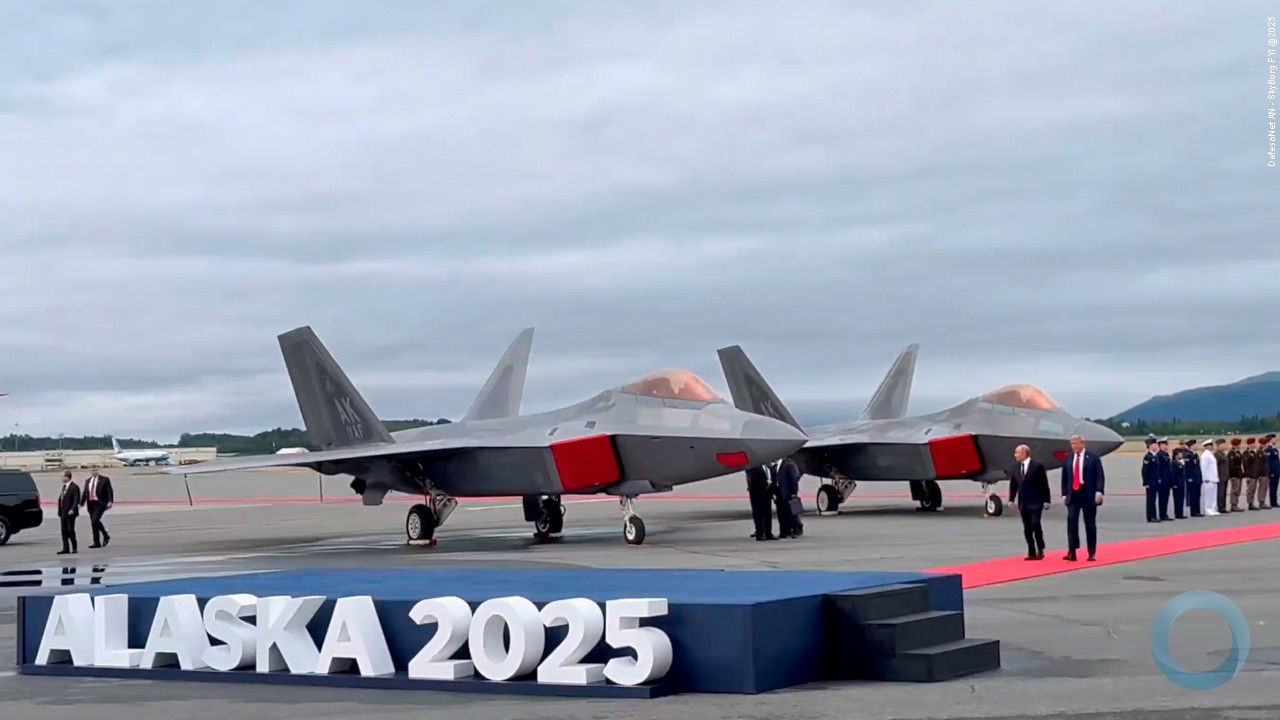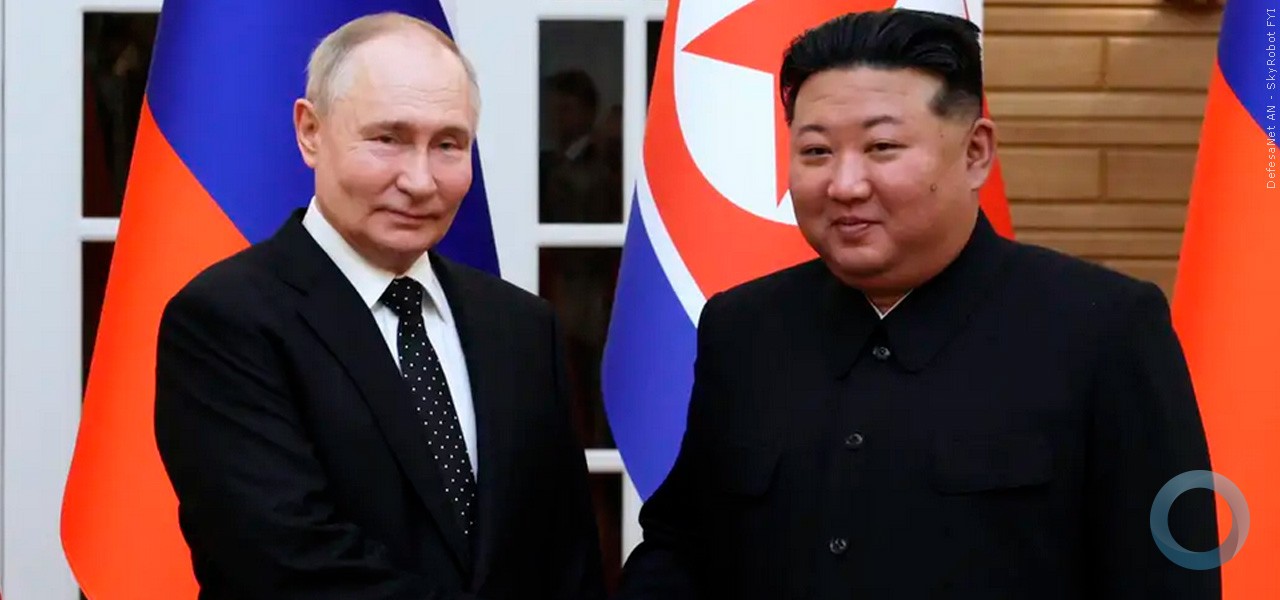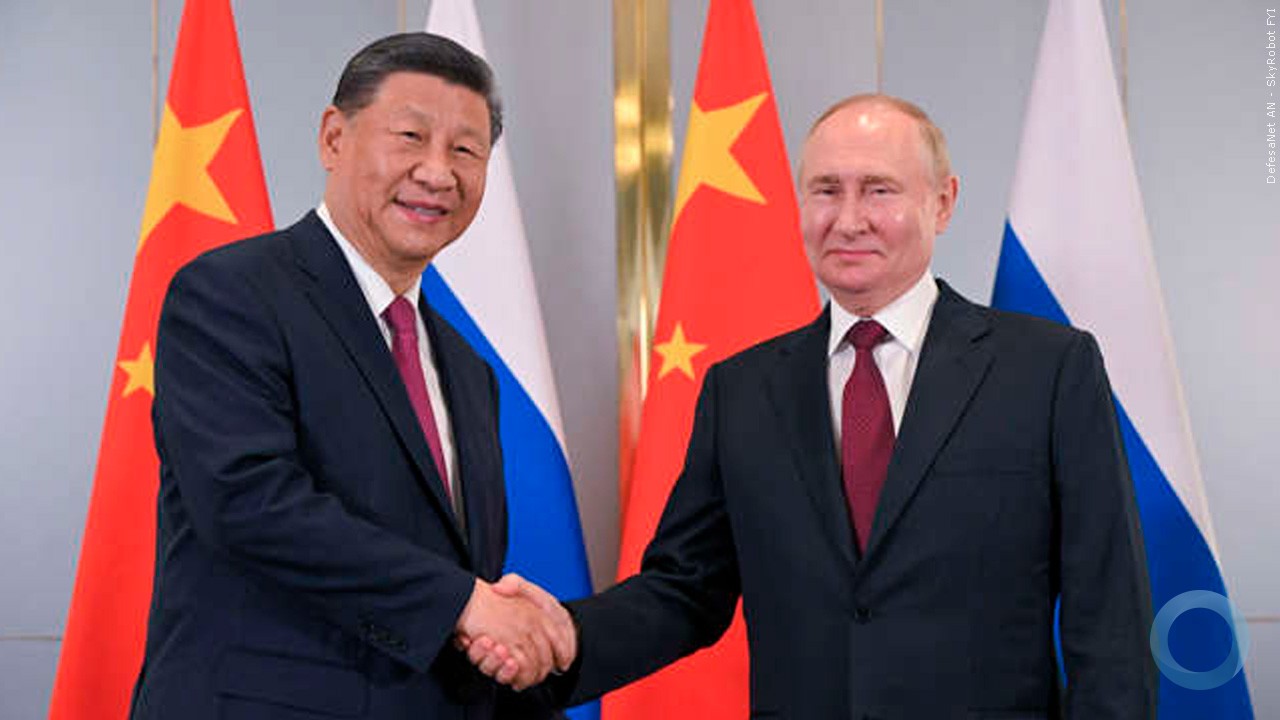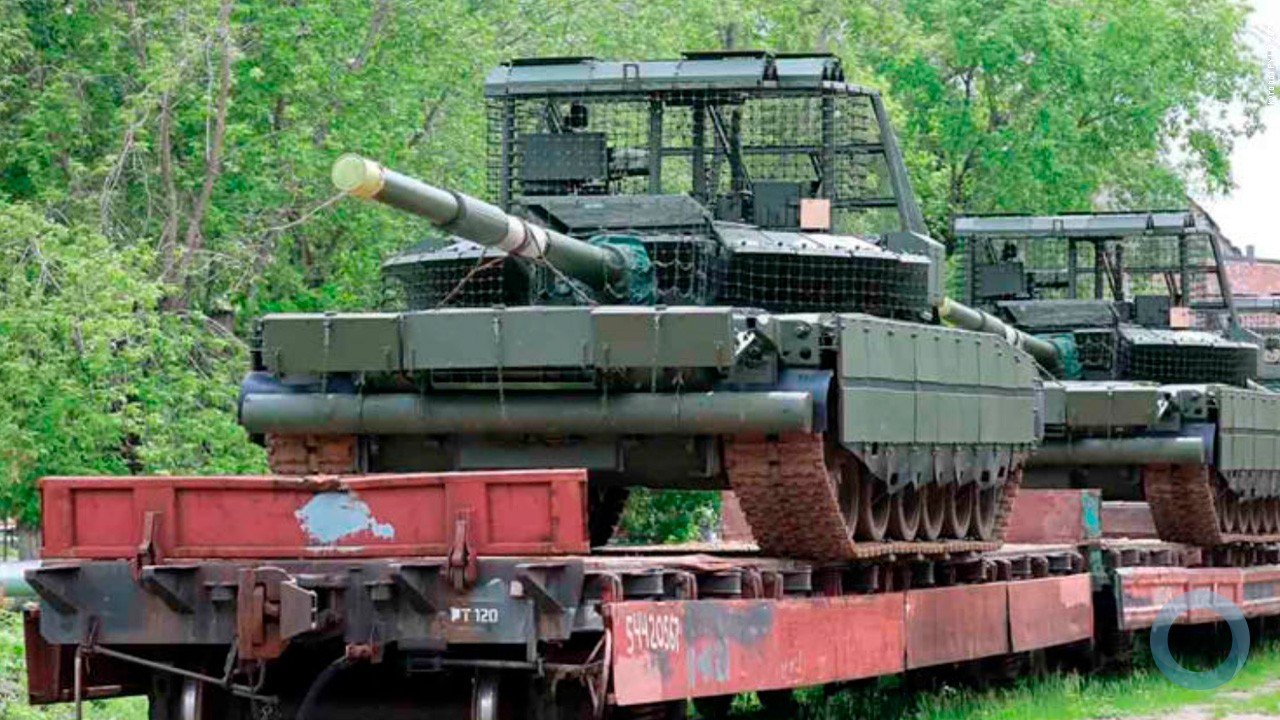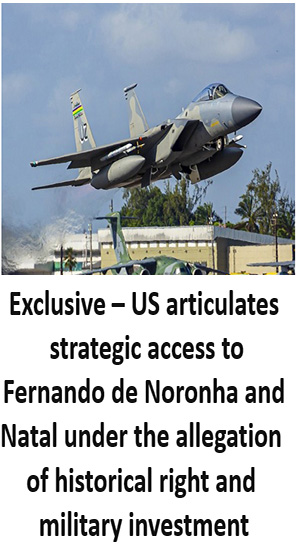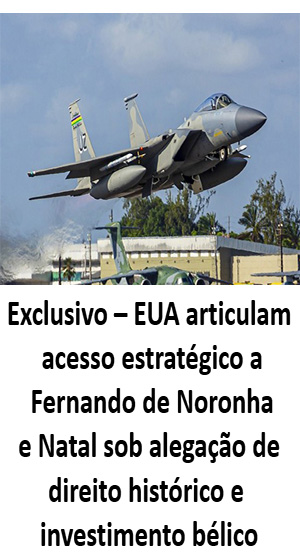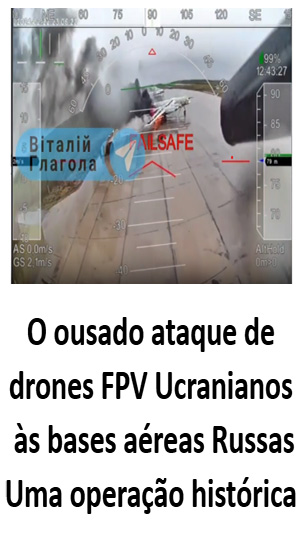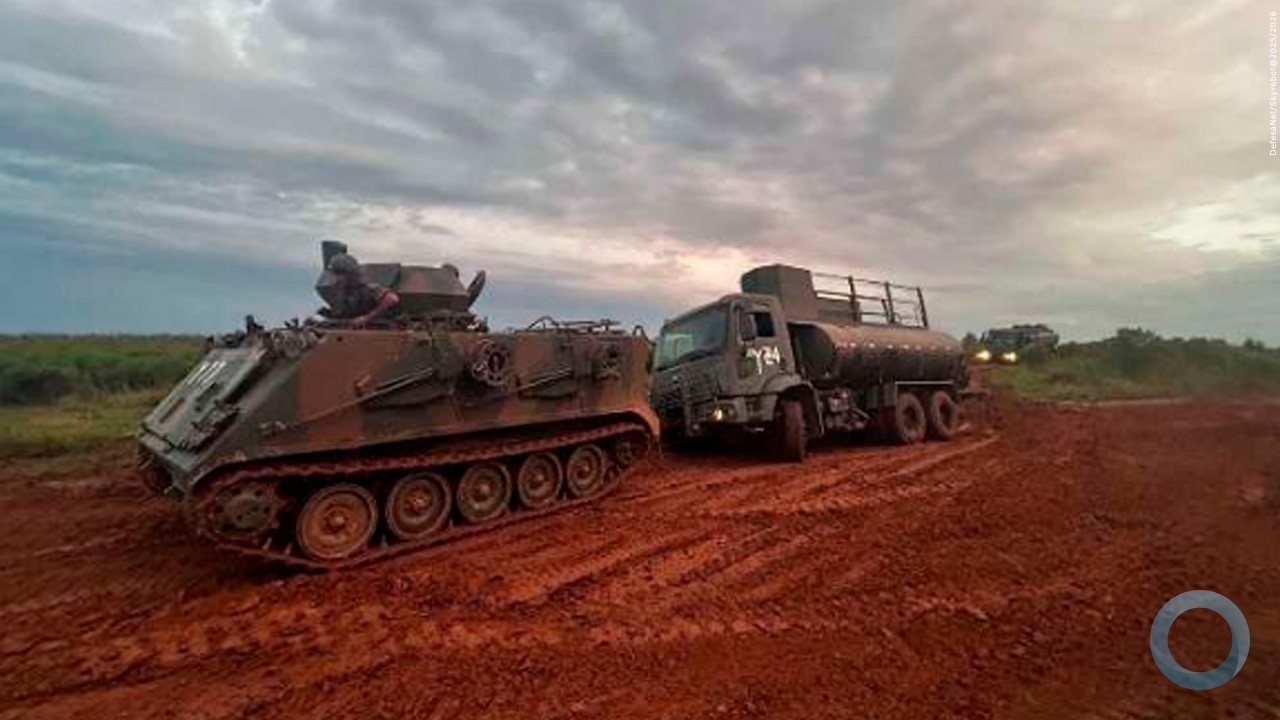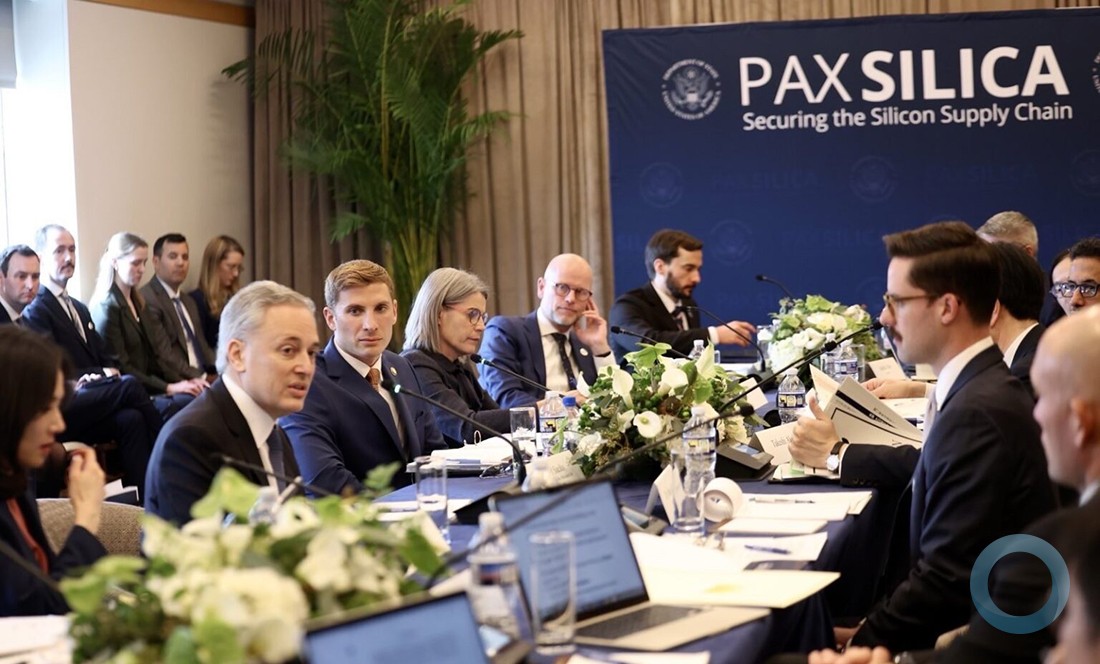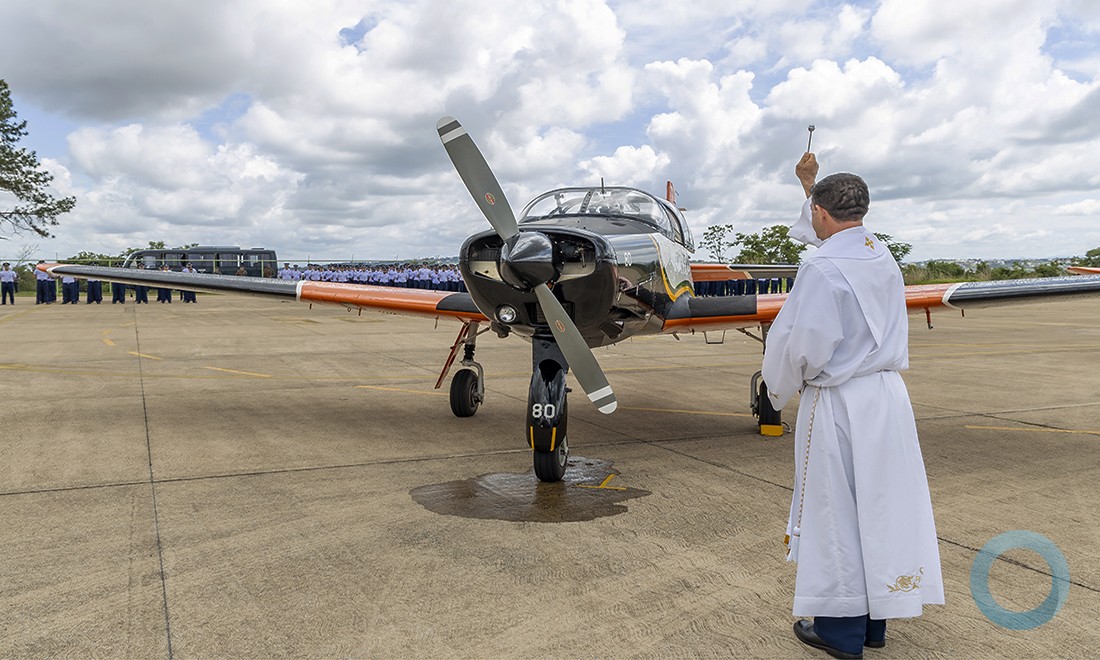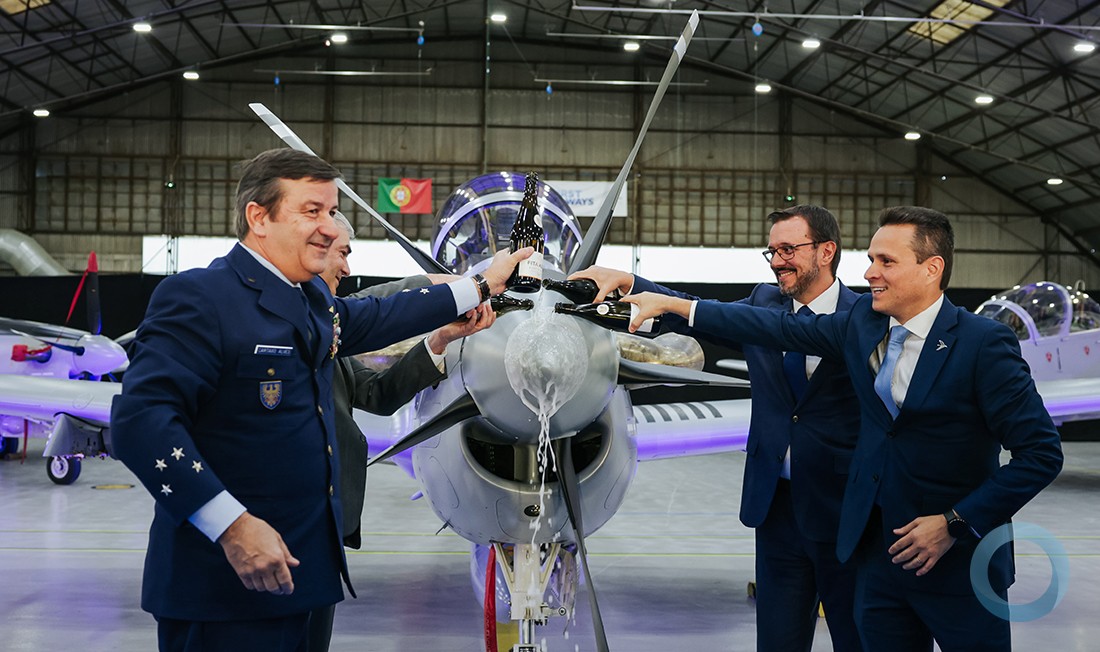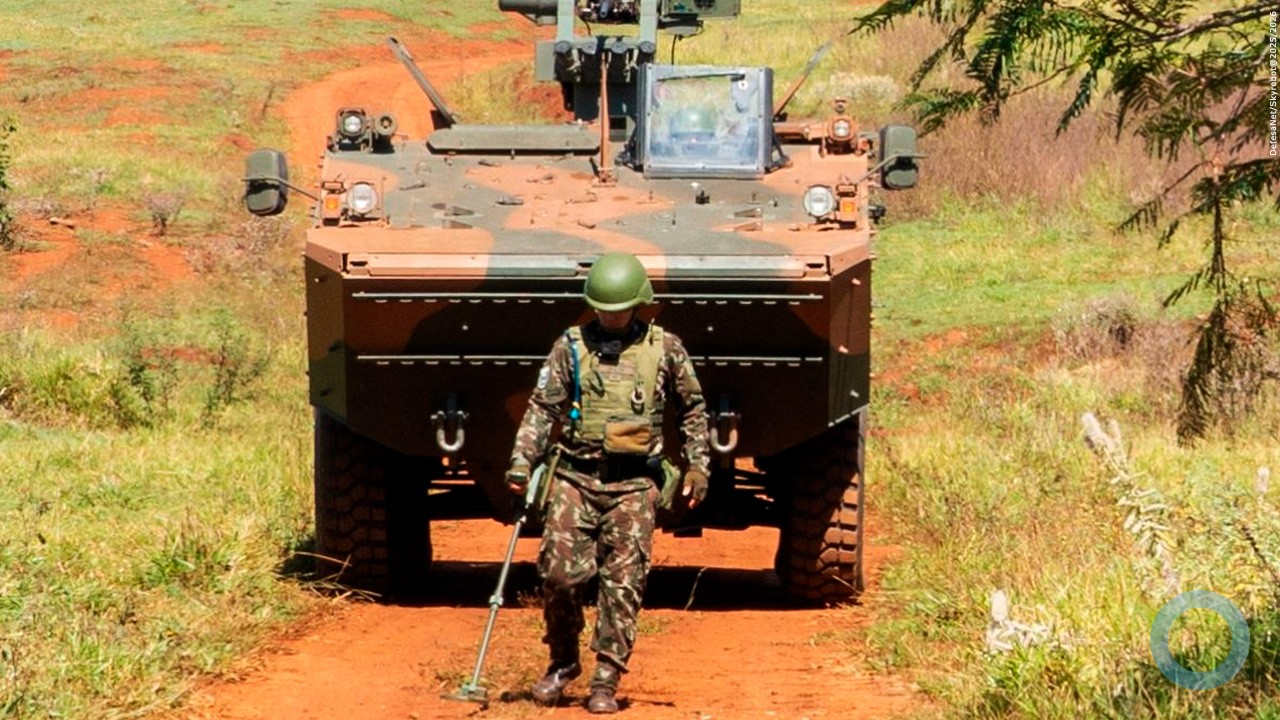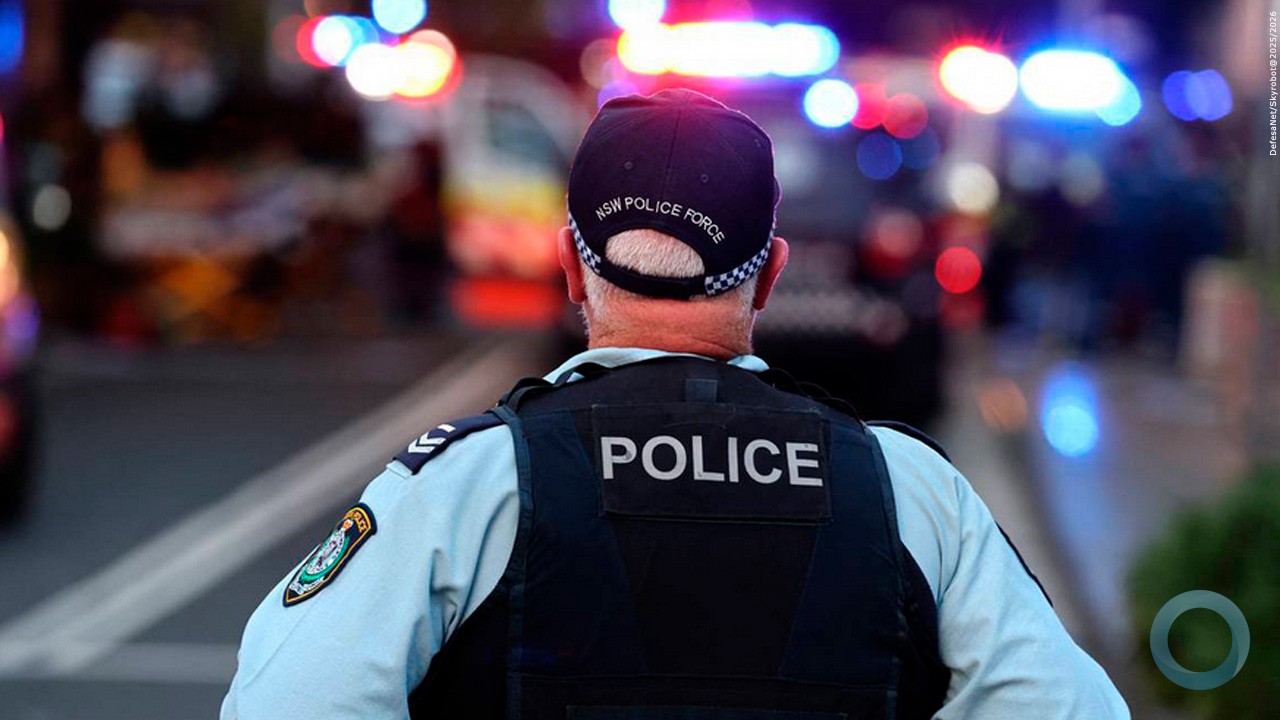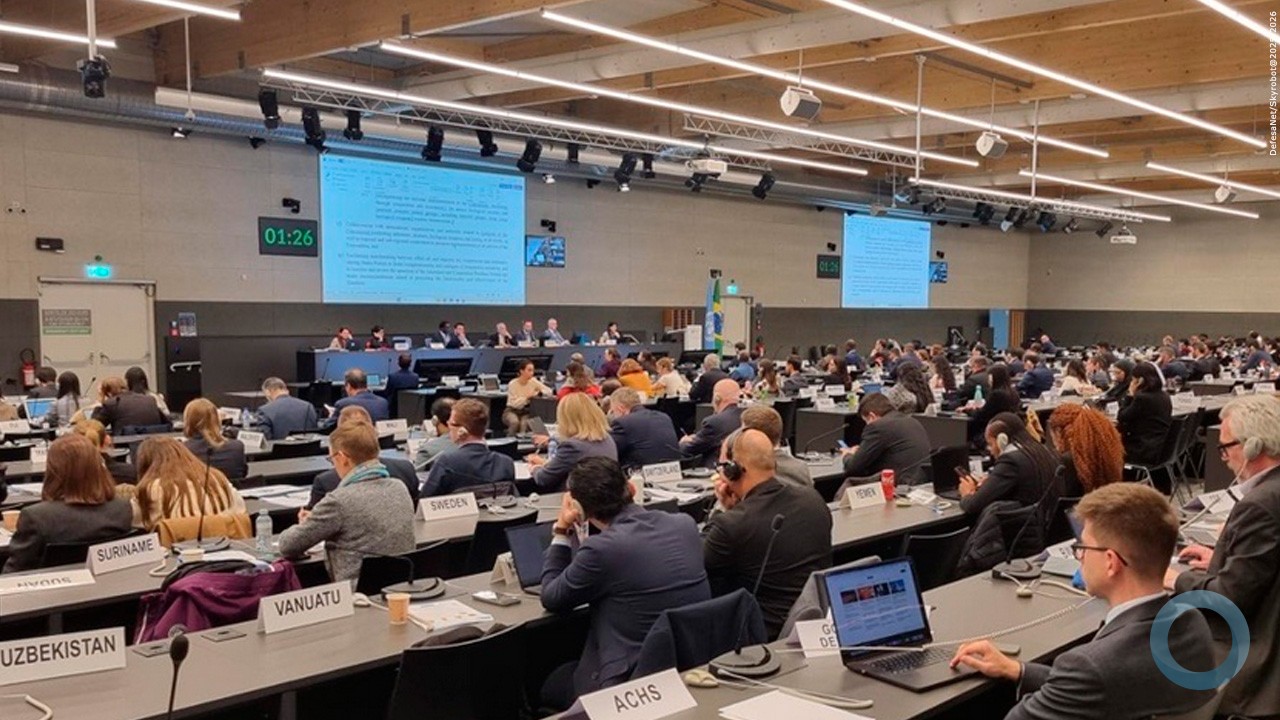Presentation to Military Attachés in Moscow 05 December 2018
In my speech I will briefly discuss features of emerging international relations, situation in Syria and main results of activity of the Ministry of Defen?e of the Russian Federation this year.
The current international situation is characterized by the increasing potential for confliction in relations between the main “centers of power”. The scale of international terrorism and radical extremism is expanding, crisis phenomena in the world economy are spreading, struggle for energy, water, food and other resources is intensifying.
The activity of the United States of America aimed at retaining its dominant role in the world and excluding other countries from competition is one of the main destructive factors complicating the international situation.
That is why Washington and its allies are taking comprehensive, coordinated measures to contain Russia and discredit its role in international affairs.
In response to allegedly growing threat from Russia, NATO increases its military presence close to Russian borders. In Eastern European countries enlarge the strength of response forces, establish anti-missile defence elements, prepare advanced aerodromes, enhance logistics of cross-border military transport, and create a system of advance weapon and property storage .
Under these conditions, we take all the necessary response measures to ensure military security of the state. Meanwhile, we are not increasing the strength of the Armed Forces and are not getting involved in a ruinous arms race. In recent years the budget of the Russian Armed Forces has remained $ 50 billion and now it tends to decrease.
For comparison, the military budget of the United States is almost 14 times larger than the Russian one. In 2019 it has amounted to over $ 716 billion, which exceeds military expenses in other countries worldwide.
Meanwhile, the activity of international extremist and terrorist organizations, primarily in the Middle East, North Africa and Central Asia, poses a real threat to the world community.
The main front against them is taking place today in Syria, where the government armed forces supported by the Russian Aerospace Forces have eradicated the ISIS largest group in the Middle East.
In 2015, when the Russian Aerospace Forces started their operation, the Syrian government controlled some 10% of the territory.
With support of the Russian Aerospace Forces, most part of the country was liberated and the government regained control over such key settlements as Palmyra, Aleppo, Uqayribat, Deir ez-Zor and Abu Kamal.
The active phase of the counterterrorism operation in Syrian was completed in last December.
Today, the ISIS militants are present in territories east of the Euphrates, controlled by the USA. The rest of radical armed formations led by the Jabhat al-Nusra are concentrated in the Idlib de-escalation zone and al-Tanf area, controlled by the US-led international coalition.
This year, the Syrian government forces, which gained combat experience under supervision of the Russian military advisers, have successfully accomplished operations to take control over Eastern Ghouta, Homs and Southern de-escalation zones. Over 23,000 militants were killed. Besides, 387 towns were liberated from Islamic extremists.
The main condition was to avoid civilian casualties, so the operations were carried out military force.
The Russian Centre for Reconciliation had a pivotal role in it.
Over 230,000 people were evacuated from de-escalation zones via humanitarian corridors during the operation.
Those militants who refused to reconcile were taken to Idlib province and to the north of Aleppo province to the city of Jarabulus.
At the same time there were no casualties among civilians or members of moderate opposition. Moreover, the militants voluntarily surrendered 650 pieces of armaments, and more than 40,000 fighters of the armed groups of the moderate opposition joined the government forces.
At the final stage of liberating operation in Damascus outskirts we faced with increasing resistance by Western countries to the humanitarian operation.
On April 7, 2018, the White Helmets, a pseudo-humanitarian organisation, fabricated a staged story on alleged use of chemical weapons by government troops in Douma, which elicited a missile strike by US and its allies against Syria.
They used 105 cruise missiles of various deployment. The Syrian air defence forces have successfully repelled the attack.
This August, peacekeeping forces got back to its operation in the Golan Heights in accordance with the UN Security Council Resolution 350 dated 1974, after restoration of full control over the Syrian-Jordanian border and southern part of Syrian-Iraqi border. In order to ensure this activity, the Russian military are monitoring situation at six observation posts located along the Bravo Line.
Situation in the Idlib de-escalation zone remains one of the most urgent issues. This is the last large stronghold of terrorists in Syria.
In order to find a settlement of Syrian situation, this September Russia and Turkey reached agreements to stabilize the situation in the Idlib de-escalation zone and to create a demilitarized zone 15–22 km deep along the contact line of government troops and the opposition.
They signed a memorandum which provides for withdrawal of heavy weapons and all radical groups from the de-militarized zone by the Turkish side.
Of course not all measures will be take on time, but it is more important that we see result of it now. After the demilitarized zone was established, the number of ceasefire violations has significantly decreased.
This proves again efficiency of the Astana-format which is aimed at peaceful settlement of the Syrian crisis.
Within the framework of this particular format, on November 24 a “pilot” project was implemented for the exchange of detainees / hostages between the Syrian government and the armed opposition.
Amid stabilizing situation in the Syrian Arab Republic, there is a number of unsettled issues, and they are first and foremost related to illegitimate presence of American military bases in Syria.
For instance, al-Tnaf. The United States have organised a so-called 55km security zone which serves as shelter for illegal armed groups where they continue terrorist activity salling out to attack government troops from time to time.
The Rukban refugee camp is also located in this area, accommodating over 50,000 refugees.
UN experts who visited the camp with a humanitarian convoy on November 3, report that along with a lack of food supplies and water, refugees are forced to leave without electricity and medical support. Thievery, violence against women and children, human trafficking are widespread in the camp. All this happens at tacit approval and connivence of American servicemen station at the military base 10km away from the camp.
The Americans themselves justify their military presence in Al-Tanf by necessity to counter Iran, which allegedly uses the Syrian-Iraqi border segment move weapons and military equipment to Syria.
For our part, we proposed to eliminate the zone and establish joint Russian-American control over the border crossing, but the American partners left our proposals unanswered.
The situation is being strained on the eastern bank of the Euphrates River, where the United States, relying on the Syrian Kurds, is trying to create an independent quasi-State entity. They are forming a government of the so-called Democratic Federation of the Nothern Syria. The Americans, supporting the Kurdish separatist sentiments with armaments supplies, allow them to oppress the Arab tribes.
The US is constantly talking to us about some kind of fight against ISIS in eastern Syria. However we see the opposite. Sleeper terrorist cells have moved to action, it resulted in ISIS expanding its zone of influence in the east.
In the west of Syria, there were also scattered militant groups, there were also ISIS sleeper cells, but the Syrian government forces and special services eliminated them. The situation is taken under the full control of the government.
In the east, there are no such measures. On the contrary, we see how the US-led International Anti-Terrorism Coalition and the units of the Syrian Democratic Forces controlled by them have not been able to complete the defeat of the ISIS in the region of the settlement in Hajin within six months.
We are talking about an area of 2.5 by 3km 25km long. We know from the experience of the government troops that such a task can be fulfilled in 1-2 weeks.
In addition, Russian intelligence vehicles regularly detect oil tanker convoys, which move from the eastern Syrian regions, controlled by the Coalition, to Turkey and Iraq. At the same time, funds through petroleum sales go, among other things, to the financing of ISIS terrorists in east of the Euphrates.
We see critical situation in Raqqa. It has been a year since, as a result of coalition bombings, this city was wiped off the face of the earth. So far, the city has not been demined. There are daily civilian casualties due to unexploded ordnance left in the city.
Neither houses nor infrastructure are being recovered. There is no electricity, no waterline, shops and hospitals in the city.
The dead bodies are lying unburied under the rubbles which leads to spread of disease and worsening sanitary-epidemic situation.
With such irresponsible actions the United States demonstrate a complete indifference to stabilization of situation in areas under its control.
We see a quite opposite situation in territories controlled by the Syrian legal government. With the help of the Russian servicemen, the Syrians are able to restore peaceful life. Residential neighborhoods are being restored, schools and hospitals are opening, roads, power stations, water supply systems are being repaired. Industrial enterprises have started functioning.
Undoubtedly there are still challenges, and first of all it concerns recovery of economy and destroyed infrastructure.
Russian always advocates for uniting efforts of international community to revive Syria. I should say that many sides have responded and are helping Syrian together with us.
Another issue of concern which is linked to revival of Syria is repatriation of millions of refugees and internally displaced persons. The Syrian government is actively promoting this process.
Russia is providing the necessary support. Joint coordination committees have been established for it. The Centre for the Reception, Allocation and Accommodation of Refugees has been created in Syria.
Over 55,000 people have returned from Lebanon and Jordan back to Syria since July 18.
Today, there are all conditions to create well-functioning political process. We support the idea of activating process of forming the Syrian Constitutional Committee.
Its work will be crucial in reforming political system in Syria, but the main thing is not to force its creation.
All segments of the population will be represented at the session including the government and the opposition. It is of paramount importance to take into account interests of all the sides, otherwise we shall a frail and illegitimate body.
It is to be noted that the Astana talks format created in early 2017 by Russia, Turkey, and Iran finally gathered all the sides concerned at one table to take decision on the results of the Congress of the Syrian national dialogue in Sochi which gave a powerful impetus to political process which had long ago stalled in Geneva.
All our efforts are ultimately aimed at implementing the UN Security Council Resolution 2254 in order to return peaceful life back to Syria.
Along with rendering assistance to the Syrian Arab Republic, the Armed Forces of the Russian Federation in 2018 addressed planned tasks to increase their combat potential.
At the same time, the main efforts were focused on maintaining a high level of combat readiness of strategic nuclear and non-nuclear forces, building up a layered aerospace defence system, as well as on improving training of troops and command and control system.
In the context of enhancing global missile defence system by the US, the combat capabilities of ground-based strategic nuclear forces have been increased. They continued to rearm them with modern Yars missile systems equipped with highly effective means to overwhelm ABM defence.
Russian industrial enterprises have launched mass production of Avangard missile complex equipped with hypersonic glide vehicle.
To replace the Voevoda missile system the most powerful in service with Russian strategic nuclear forces, the Sarmat heavy intercontinental ballistic missile has been developed. This year the missile have successfully undergone drop test.
In naval strategic nuclear forces, strategic missile submarines ensured permanent combat duty. They carry out serial patrolling missions including those under the Arctic ice.
Further development of the Naval Strategic Nuclear Forces includes construction of the Borey-A-class submarines equipped with ballistic missiles to overwhelm ABM defence systems.
Potential of Air Strategic Nuclear Forces was maintained by upgrading the Tu-160 and Tu-95ms bombers, equipping them with more powerful engines, modern onboard equipment, and also by expanding the range of weapons.
At the same time, the development of strategic weapons is conducted in strict compliance with international obligations, as defined by the treaties on strategic offensive arms.
To guarantee defence of the Russian Federation from airspace attacks, we also steadily develop the aerospace defence.
Increasing ability to detect attacking ballistic missiles is fostered by enhancing space and ground echelons of missile attack early warning system.
A solid radar field has been created along the Russian borders. As a result, it ensures detection of ballistic missiles from all missile-prone directions and on various flight trajectories.
We have increased capabilities of intelligence and air control system in western and southern areas.
Air formations and military bases have received over 140 modern aircraft. The Kinzhal high-precision hypersonic aircraft missile system is being modernised. Air defence regiments are being rearmed with the S-400 SAM systems which have advanced capabilities for intercepting air targets. At present there are over 20 regiments on air defence standby equipped with this complex.
Development of general purpose forces remains priority in this sphere.
At the same time, we attach great attention to improving strike capabilities, maneuverability and autonomy of military units.
This is first of all achieved by rearmament of the troops with modern armored vehicles, high-precision and air defence complexes as well as Electronic Warfare and command and control systems. This year, land forces and airborne troops have received over 3,000 pieces of new and modernised armaments.
The frigate Admiral Gorshkov and the major amphibious ship Ivan Gren were commissioned by the Navy. By the end of the year we also expect another 13 warships and boats to join the Navy.
The Bal and Bastion coastal missile systems armed with Uran and Onyx anti-ship missiles are being supplied to the troops.
Besides, one of the priorities for development of the general-purpose forces is the improvement of electronic warfare, command and control systems. This year we have achieved significant results in this sphere.
In general, implementation of the State Defence Order 2018 has fully armed over 30 various formations and military units with a share of modern weapons amounting to 61.5%. By the end of 2020 we plan to bring this figure up to 70%.
In the future, as part the new state armaments program, the strategic nuclear and non-nuclear forces, the aerospace defence forces, reconnaissance, control and EW units will be armed with prospective weapons. The troops will receive new samples of high-precision weapons, unmanned aerial vehicles and robotic systems.
In 2018, work has been underway to maintain manning troops at the level of 95-100%.
The number of servicemen serving under the contract has reached 384,000. This leads to a marked qualitative increase in combat capabilities of the units.
Transition to the new contract manning system of combined arms formations, Marines and Airborne Troops allowed to have in their composition required number of battalion task groups, ready to fulfill missions.
It is planned to further increase the number of military personnel under the contract.
Since July this year, in accordance with the decision of the President of the Russian Federation, a system of military and political work has been created in the Armed Forces in order to form high morale and combat qualities, patriotism and devotion to the Homeland. It is designed to form cohesive, coordinated and strong-minded military teams capable of performing tasks in any environment.
The Central Office of the Russian Defence Ministry includes now also the Main Military-Political Directorate of the Armed Forces. The troops and forces have begun to perform the tasks of the relevant authorities.
The Russian Defence Ministry is working on improving quality of combat training, introduction of advanced experience of the troops in educational process. For this purpose, the most modern educational technologies and information and educational resources are used in the training process.
This year, there was a first fully-fledged graduation of young officers. The troops received more than 12,000 lieutenants who had entered to military schools in 2013-2014.
In order to develop fundamental and applied science, as well as to create high-tech industries, the Era military innovative technopolis is being improved. This year, it has created 18 new specialized complexes fitted with unique equipment.
Young scientists of four newly created scientific companies, representatives of more than 30 leading industrial enterprises and scientific organizations are involved in the research process.
One of the priorities in the activities of the Armed Forces is to improve the training of troops (forces). At the same time, we are not only introducing the experience of Russian servicemen in the fight against terrorism in Syria, which has undoubtedly become an excellent school for improving professional skills of our officers.
First of all, we teach servicemen to conduct combat operations against a high-tech enemy equipped with modern weapons, in the conditions of all kinds of reconnaissance and radio-electronic impact, massive use of aviation and precision weapons.
Development of new types of weapons, practical experience gained in Syria and in various exercises, as well as the analysis of modern military conflicts gave impetus to development of the military art theory.
All this allows the troops and forces to successfully perform tasks, including those outside the Russian Federation.
Many of you were present at the main training event of the Russian Armed Forces in 2018 – the Vostok 2018 maneuvers.
They have become the most ambitious in scope and in the number of troops attracted over the past few decades.
The main purpose of the maneuvers is to check the level of training of command and control bodies and troops in planning and operations in the Eastern theater of operations.
They did not target any countries. The maneuvers were set in specially created scenario, which is based on the escalation of confrontation between two coalitions of conditional States, which were located on the territory of the Russian Federation.
A distinctive feature of the maneuvers was the bilateral format not only at the strategic, but also at the operational and tactical levels of command and control.
Troops trained redeployment at large distances. We have achieved new results in managing joint groups of troops and forces in difficult and unfamiliar condition, as well as amid the use of air defence forces and means.
The need to further enhance the combat capabilities of the Airborne Troops was confirmed, due to an increase in the share of mobile airborne assault component, equipped with modern multi-purpose helicopters.
They were also attended by military contingents of the People's Liberation Army of China and the armed forces of Mongolia, which acted in a common scenario together with Russian servicemen.
Besides, it was the first time as the Ocean Shield inter-fleet drills had taken place in the Mediterranean Sea. A large joint force grouping of the Navy was formed in the Mediterranean, capable of autonomously solving a wide range of tasks. In the future, these exercises are planned to be held on a permanent basis.
Along with the Vostok 2018 maneuvers, great attention was attached to combat training with the CSTO and SCO state-members.
At a high level, a strategic command post exercise was held to practise deploying forces and means of the collective security system in the Central Asian region, as well as joint exercises with military contingents of the Collective Operational Response Forces of the CSTO Interaction 2018, Unbreakable Brotherhood 2018, Air Bridge 2018. During the exercise troops practised issues of preparing and conducting joint operations for the localization of armed conflicts in Central Asia.
The increased level of joint training was shown by the anti-terrorism command post exercise of the armed forces of the SCO member states Peace Mission 2018.
Considerable professional experience was gained by the Russian and Pakistani military personnel during the Friendship 2018 exercise, which took place in October this year in the mountains near Islamabad at an altitude of more than 1,400 meters.
We saw high training level of servicemen at the Indra 2018 Russian-Indian exercise.
An important milestone in ensuring security and trust was the Komodo 2018 joint Russian-Japanese naval exercise .
The International Army Games remain one of the effective means of strengthening military cooperation, aimed at improving individual skills of the military personnel and coherence of units.
Since the beginning of the first Games the number of participating countries has doubled: from 16 countries in 2015 to 32 this year. Competitions were held in seven States. The Games were attended by 189 teams from 32 countries competing in 28 contests made up of over 4,700 participants. The viewing audience exceeded 70 mln people, inlcuding Internet users.
This year the level of training of the participants was so high, the struggle was hard and uncompromising until the last day of the Games.
The training system created in the Russian Armed Forces resulted in first place in overall standings. The Russian team also won 18 competitions. The first runner-up the team of the People's Republic of China, followed by the team of the Republic of Kazakhstan.
The teams of Azerbaijan, Armenia, Belarus, Venezuela, Egypt, Iran, Serbia and Uzbekistan constantly participate in the Games. There is also an increase in the professional skills of soldiers of other countries.
The feedback received from foreign partners indicates an increased interest in the Games. They are considered as an important component of the combat training of the national armed forces.
In August next year, it is planned to hold the Jubilee – the fifth International Army Games, which will be held in 10 States.
In the outgoing year, special attention was paid to international military cooperation, which was carried out with 90 foreign countries. This work resulted in expansion of the list of countries with which the Russian Defence Ministry actively cooperates. New bilateral agreements on military cooperation with nine States have been signed.
Particular attention in international activities was paid to expansion of mutual relations with the CIS member States, strengthening the collective forces of the CSTO, as well as the development of the military component of the SCO. In August this year, the meeting of the heads of the SCO general staffs of the armed forces discussed topical issues of international and regional security.
In order to further develop cooperation, a new mechanism was established to ensure interaction between SCO defence ministries – the Expert Working Group under the SCO Defence Ministers Meeting.
The relations of the Armed Forces of Russia with the military departments of Southeast Asia are actively expanding.
At the meeting of the Council of Ministers of Defense of the ASEAN countries – the so-called ADMM plus, held in Singapore, our approaches to key issues of global and regional security were brought to the attention of its participants. Concrete steps have been taken to deepen bilateral military ties with China and India.
Russia continues implementation of its international obligations in the field of arms control and disarmament.
By the target date of the START Treaty (February 5, 2018), we have fully fulfilled our obligations to reduce strategic offensive arms.
Unfortunately, our American partners, in order to reach quantitative parameters established by the Treaty, in two year have converted a part of their strategic offensive weapons (4 launchers on each of 14 Ohio-type submarines and 41 B-52H) and unilaterally excluded them from accounting under the Treaty. This gives them the opportunity in the shortest possible time to build up the potential of their strategic offensive forces and increase the number of warheads by more than 1,200 pieces.
We hope that the United States will approach the solution of the problem in a balanced and constructive manner and will resume the dialogue on the extension of the START-3 Treaty.
At the same time, the situation in arms control sphere has become significantly more complicated due to statement of the President of the United States on the intention to leave the INF Treaty. We regard this as a very dangerous step that can adversely affect not only European security, but also strategic stability in general.
By wrecking another agreement (in 2001 the USA left the ABM Treaty), the United Stated is trying to shift the blame on Russia allegedly violating its obligations.
Accusations against Russia are an attempt to disguise the real situation.
And the real situation is as follows. Since 2000, we have been urging the Americans to stop using target rockets that simulate medium and short-range missiles when testing missile defence systems, which is prohibited by the Treaty. In addition, the MK-41 universal launchers deployed in Romania and being deployed in Poland are capable of launching medium-range cruise missiles, which is a direct breach of the obligations under the INF Treaty.
There are other problems that we have repeatedly told our American colleagues about and which are to be corrected.
Given that there are official representatives of foreign military departments in the hall, I would like through you to inform your leaders that if the INF Treaty will be eliminated, this will not remain unanswered from our side.
As military professionals, you should understand that not the territory of the United States, but the countries that deployed American complexes with medium and shorter-range missiles, will be the targets of Russia's response.
During this difficult period of our relations with the United States and its allies, agreements to prevent dangerous military activities and incidents offshore and in airspace remain an important mechanism for ensuring military security.
As part of implementation of these agreements, the National Centre for State Defence Control of the Russian Federation has organized channels of emergency international communication with the military departments of a number of states.
A positive example of such interaction was the positive reaction of the US Department of Defense to a request to reduce the intensity of NATO’s operational and combat training close to the Russian borders during the FIFA World Cup.
The Russian Ministry of Defence continues to pay special attention to ensuring transparency of activities of the Armed Forces.
This year, we have organised more than 9,000 briefings, press conferences, interviews and other informational events, with some 800 of them with participation of the leadership of the Armed Forces.
More than 1,800 reporters from more than 120 leading world media outlets took part in press tours to Syria and briefings.
The Moscow Conference on International Security (April 2018) was attended by more than 850 delegates from 95 countries. At the same time, 30 delegations were headed by defence ministers.
It is to be noted that 102 official military delegations visited the ARMY 2018 IMTF and the National Security Week international forum.
The Vostok 2018 maneuvers have shown an unprecedented level of transparency. Before the maneuvers took place, more than 80 military attachés from 57 countries, including representatives of the NATO military mission and the European Union permanent mission to the Russian Federation, were informed about their goals and objectives.
In the future, we will continue the practice of providing the most relevant information about the main issues of daily activities and prospects of development of the Russian Army. At the same time, it should be noted that Ministry of Defence of the Russian Federation does not limit any country to participate in events organized for military diplomats accredited in Russia.
Ladies and gentlemen!
The modern Armed Forces of the Russian Federation are capable of neutralizing any threats to the security of the state and protecting the national interests of Russia and its allies.
In the future, the progressive and balanced development of the Army and the Navy will continue to ensure the peaceful social and economic development of this country and maintain strategic stability in the world.
To achieve these goals, we are open for an equal dialogue on military security.
In conclusion, I would like to congratulate you on coming Christmas and the New 2019 Year.





